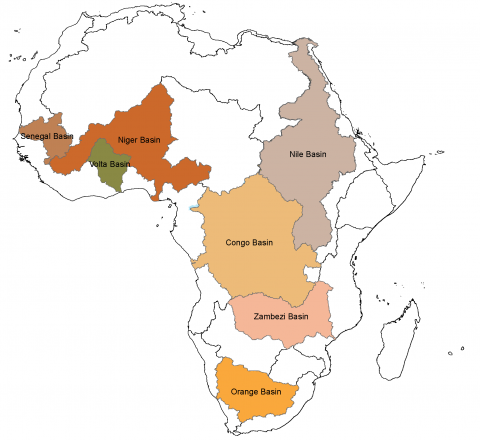Project overview
Background
Africa’s infrastructure is at present inadequate, both in terms of physical stock and quality of service, to support sustained growth in the years to come, both under current and future climate. Yet, relatively little is known about how climate change will affect the desirable design, location, timing, and composition of the stock of infrastructure that will need to be built in the short to medium term. A better understanding of the range of climate impacts on infrastructure development and of approaches to deal with the uncertainty inherent in projections of future climate change and other stressors is necessary in order to inform future investment decisions. Without this understanding, there is a risk of locking Africa into a pattern of climate-vulnerable development that will be very costly, or in some cases impossible, to repair in the future.
Objectives
The objective of this work is to strengthen the analytical base for investments in Africa’s infrastructure under a future uncertain climate. More specifically, the program seeks to: a) Evaluate a range of impacts of climate change on a subset of infrastructures (roads, hydro-power and irrigation) over a range of climate scenarios; b) Develop and test a framework for investment decision-making that can be ‘robust’ under a wide range of climate outcomes; c) Formulate actionable recommendations for decision makers on how to enhance the climate resilience of infrastructure development.
Description of the proposed work.
Building upon the Africa Infrastructure Country Diagnostic (AICD – http://www.infrastructureafrica.org), and to inform the implementation of the PIDA program, the study will address the following questions:
Impacts: assuming no adaptation, what is the range of deviations (over different climate scenarios) that climate change would cause in terms of progress toward specified infrastructure deployment and service goals as derived from plausible infrastructure development targets
Adaptation: what is the cost of reducing, across as many climate scenarios as possible, the risk that investment in the infrastructure sectors of inquiry may be inadequate to the climate of the future (in terms of size, siting, or design)?
The approach proposed envisages two tracks of analysis: under track 1, a policy-level analysis of impacts and adaptation options would be conducted, at a relatively coarser level of spatial resolution and largely using data readily available from global or regional sources. Under track 2, the methodology developed to identify ‘robust’ adaptation options (i.e. option that would result in the infrastructure delivering the expected services under as many climate scenarios as possible) would be applied to the design of specific investments under preparation.
Project steering committee
Raffaello Cervigni (World Bank), Seleshi Bekele (ACPC) & Fatima Denton (ACPC)
Project duration
May 2012 - February 2013
Location
Congo, Niger, Nile, Orange, Senegal, Volta and Zambezi
Sponsors
 |
 |
 |
 |
 |
 |





